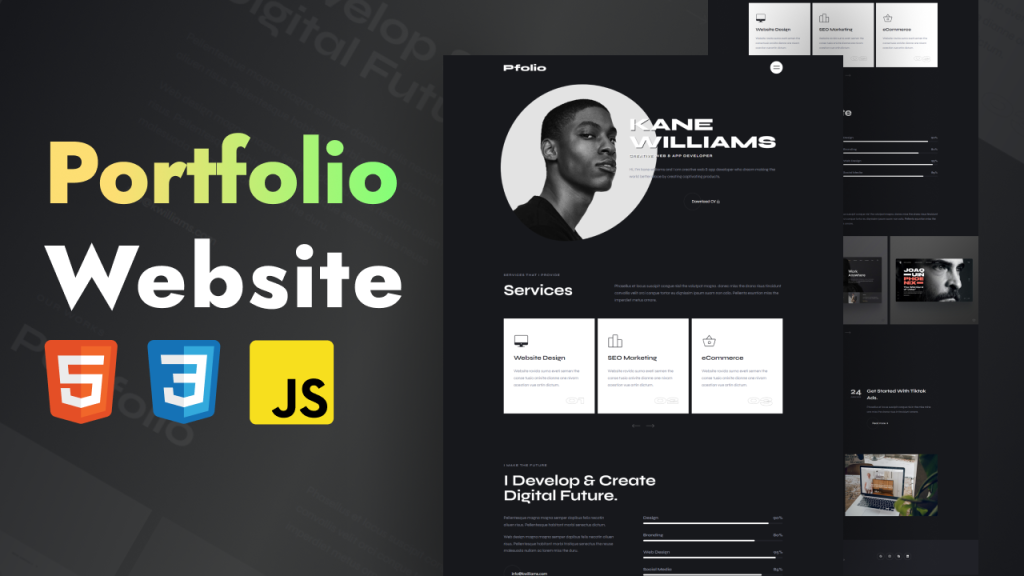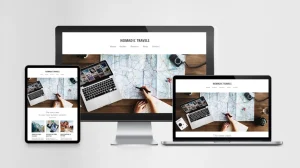A portfolio website is one of the best ways to showcase your skills, projects, and creativity to the world. Whether you’re a web developer, designer, or freelancer, building your own website helps you establish a strong personal brand and stand out from the competition.
This complete guide will walk you through every step of creating a portfolio website from planning and coding to launching it online even if you’re a beginner.
Table of Contents
Why You Need a Portfolio Website
Your portfolio is your digital identity. It gives you control over how you present your work, achievements, and experience. Unlike social media or job portals, a portfolio website is fully customizable and professional.
Here’s why you should create one:
• Builds your online credibility and personal brand
• Displays your skills and experience attractively
• Helps clients or employers contact you easily
• Shows initiative and creativity
Step 1: Plan Your Portfolio
Before writing code, decide what sections your site should have. A strong portfolio website typically includes:
• A clean homepage with a short introduction
• An “About Me” section
• A “Projects” or “Work” section featuring your top work
• A “Contact” section or form
• (Optional) A blog section for sharing insights
Choose a color palette and fonts that match your personality and keep the design simple yet elegant.
Step 2: Set Up Your Project Structure
Create a folder on your computer with the following structure:
portfolio → index.html, style.css, script.js
This keeps your files organized and easy to manage.
Step 3: Create the HTML Structure
Use HTML to define the structure of your website. Here’s a simple layout:
• Header with your name and tagline
• About section introducing who you are
• Projects section highlighting your best work
• Contact section with your email or form
You can later expand it with navigation menus and links to social media.
Step 4: Design the Website Using CSS
Once your structure is ready, move on to styling. Use your CSS file to define colors, layouts, and typography. Keep your design clean, responsive, and easy to navigate. Use soft colors and legible fonts like Poppins or Roboto.
Add consistent margins and spacing to make the layout visually appealing. You can also include hover effects on buttons or project cards for a professional touch.
Step 5: Add Interactivity with JavaScript
JavaScript helps make your site dynamic. You can use it to create smooth scrolling, animations, or pop-up modals.
For example, add smooth scrolling between sections or display project details in modals when clicked. If you’re comfortable with libraries, consider using GSAP or AOS for animation effects.
Step 6: Make It Mobile Responsive
Most visitors will access your portfolio via mobile devices, so responsiveness is essential. Use CSS media queries to adjust layout and font sizes for smaller screens.
Tip: Use tools like Chrome DevTools or Responsively App to test your site across multiple devices.
Step 7: Deploy Your Website Online
Once everything looks perfect, it’s time to publish your portfolio website. You can easily host it using free or paid platforms:
• GitHub Pages – free and reliable for beginners
• Netlify or Vercel – easy drag-and-drop hosting with custom domains
• Paid hosting like Hostinger, Bluehost, or GoDaddy for a professional domain
Don’t forget to add a custom domain (e.g., yourname.com) to make your portfolio look professional.
Bonus Tips for a Professional Touch
• Add a favicon for branding consistency
• Include SEO meta tags for better visibility on Google
• Optimize your images for faster loading
• Use Google Analytics to track visitors
• Add a contact form using services like Formspree or Netlify Forms
Final Thoughts
Building a portfolio website is more than a technical task it’s a creative journey. It’s your digital handshake to the world, showing who you are and what you can do.
Start with the basics, keep your design minimal, and update your portfolio regularly as your skills grow. Over time, your site will become a reflection of your journey as a professional.
Also Check How to Program a Calculator in Python – Ultimate Guide 2025




1 thought on “How to Create a Portfolio Website Using HTML, CSS, JS – 2025”